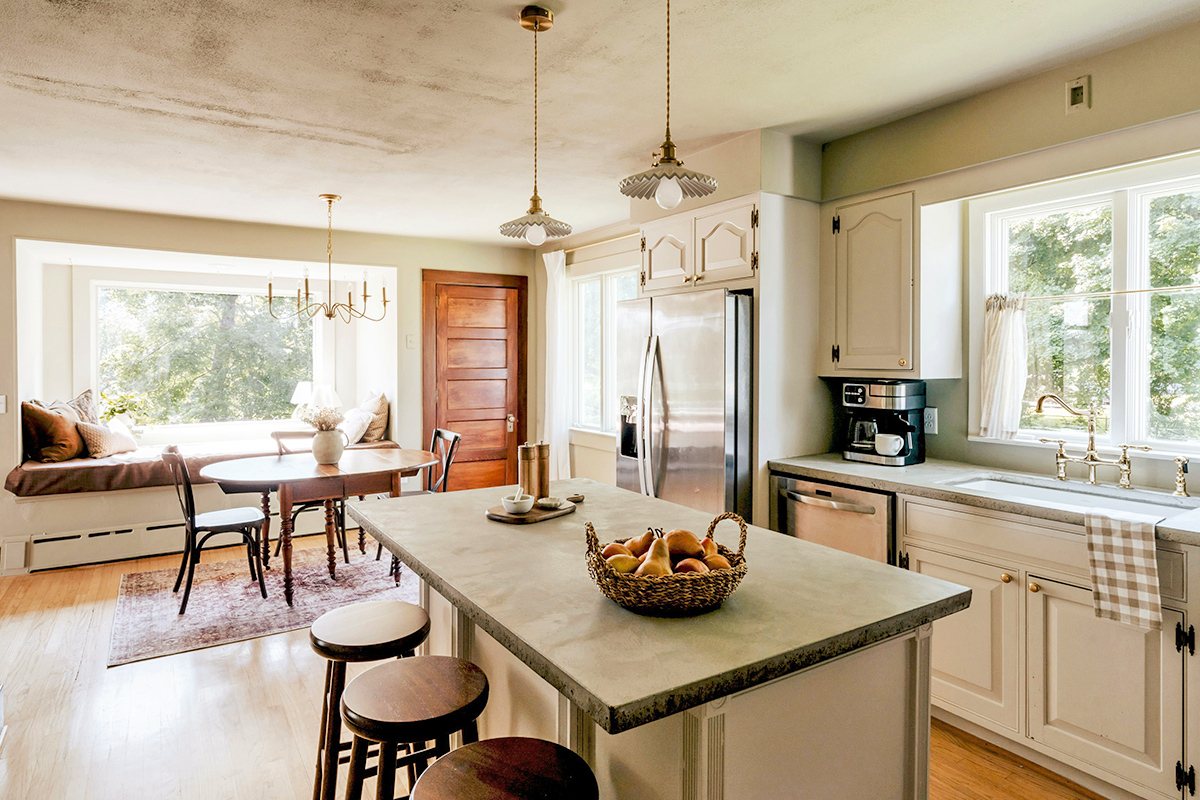Want to make a small space feel bigger without knocking down a wall? All you need is a gallon (or two) of paint. Color drenching — painting walls, trim, ceiling, doors, and built-ins the same color — provides a cocoon-like feel that’s equal parts intimate and expansive.
“Color drenching creates visual continuity, since your eye doesn’t stop to register contrast or hard edges,” Boston-based interior designer Sarah Cole says. This tricks your brain into thinking the room is bigger than its actual square footage.
Want to try the paint trend yourself? Read on for Cole’s tips for successful color drenching.
Pick a Color Palette
It’s daunting enough to select a wall color you’ll love for years to come, let alone a shade for trim, doors, and possibly a ceiling, too. There’s no wrong answer, but Cole recommends midtones and earthy hues, which tend to be more forgiving than stark whites and primary brights. Consider colors with depth and softness, such as slate blue, mushroom, ochre, sage, or clay. For a dramatic statement, opt for a deep, moody hue.
“Keep in mind the color doesn’t have to be bold,” Cole says. “Color drenching works just as well with subtle colors and even neutrals.”
More from our network
House Outlook is part of Inbox Studio, which publishes content that uplifts, informs, and inspires.
Layer Lighting
When color drenching, it’s important to layer light sources. This will bring out the richness and dimension in the paint. Cole says warm bulbs often play better with darker and earthier tones, though it ultimately depends on the specific shade. Before committing to a paint color, she recommends testing samples on multiple walls and observing how they look at different times of day, both in natural light and with the fixtures you plan to use in the space.
Rooms with odd angles or low ceilings are perfect candidates for this paint technique, Cole says, since the continuous color downplays architectural quirks, creating a more unified space.


Consider Fixed Elements
One common mistake when color drenching is not taking fixed elements of the room into account. White vinyl windows are a notorious offender. “The whole point of color drenching is to create a seamless, uninterrupted visual flow,” Cole explains. “If you drench the room in a beautiful moody hue and then leave bright white vinyl windows exposed, those windows suddenly become the loudest thing in the room.”
It’s possible to paint vinyl window frames yourself, but it requires surface preparation and the right materials to ensure a lasting, professional-looking finish. If that’s not something you’re prepared to do, consider adding window treatments in the same color as the rest of the room to draw attention away from the window frames.
Start Small
To dip your toe into the color drenching trend, skip the living room for now. Instead, Cole suggests starting with a smaller, low-stakes room, such as a mudroom or powder room.

















